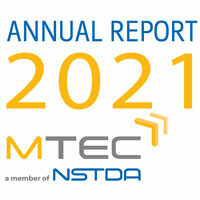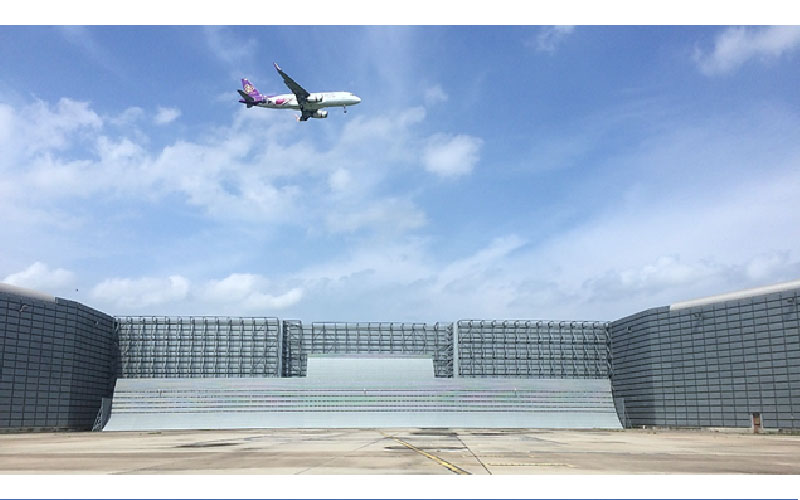Research Background
At present, the recovery beds for the elderly and convalescent patients being sold in Thailand still have some drawbacks. The design of these beds does not yield comfortability for bodily movement and it causes a feeling of being in a hospital. Furthermore, the price is quite expensive because these beds are imported products.
Aviation safety is very important since it involves a number of people, such as passengers, airport users, and airport staff and affects the credibility of all aviation-related organization. The Airports of Thailand Public Co., LTD. (AOT) is well aware of this issue, thus developing a policy and implementing various measures in order to prevent aviation accidents and incidents and reduce the risk of such occurrences in the airport.
Accordingly, AOT has commissioned a team of researchers from the National Metal and Materials Technology Center (MTEC) to study the safety effects of Ground Run-up Enclosures (GRE) which is located in the direction of jet blast generated from the engine run-ups. This location is vulnerable and could possibly cause accidents during the aircrafts’ landing and take off if the GRE is in operation. Therefore, AOT together with its community representatives and related government organizations had resolved that the effects of the GRE must be studied extensively so that the conditions of operating the GRE with acceptable safety risks could be identified and formally accepted by all stakeholders.
Research objectives
Study the effects of Ground Run-up Enclosures (GRE) on aviation operations in order to identify appropriate operating conditions and develop practical safety guidelines.
What does the research team do?
1. Application of various relevant engineering fields in designing anemometers to measure the wind speed and wind direction.
2. Application of statistics with computer programing in studying a 6-year data set of the wind speeds and directions at the GRE.
3. Application of Computational Fluid Dynamics (CFD) in simulating the airflow of the jet engines and its surrounding environment (especially, the natural wind speeds) at the GRE under two conditions, i.e. the engine run-ups are in operation and not.



A Design and Installation of the Anemometers for Collecting Data on Wind Speed and Direction
Research results
1. Operation conditions and guidelines of the GRE presented to the Civil Aviation Authority of Thailand (CAAT)
2. Safety information provided for pilots in taking off and landing practices at Suvarnabhumi Airport
Research status
Completed
Outlook
In case of relocating the GRE, the MTEC research team in this project is ready to offer further study regarding the safety effects on aerodynamics and aeroacoustics.
Research team
Dr.Atipong Malatip, Dr.Sittikorn Lapapong, Dr.Supakit Worasinchai, Mr.Anek Phuchamnong, Mr.Prasit Wattanawongsakun, Miss Rattanasuda Naewngerndee, Mr.Kiatkong Suwannakij, Miss Wassamon Phusakulkajorn, Dr.Sedthawatt Sucharitpwatskul, Mr.Napol Khongcharoen (SO.Pro.), and Miss Porntip Chaiwattana (SO.Pro.)
Contact
Dr. Atipong Malatip (Senior Researcher)
Computer-Aided Engineering Research Team
Engineering Design and Computation Research Group
Tel. +66 2564 6500 ext. 4319
Email: atipongm@mtec.or.th

